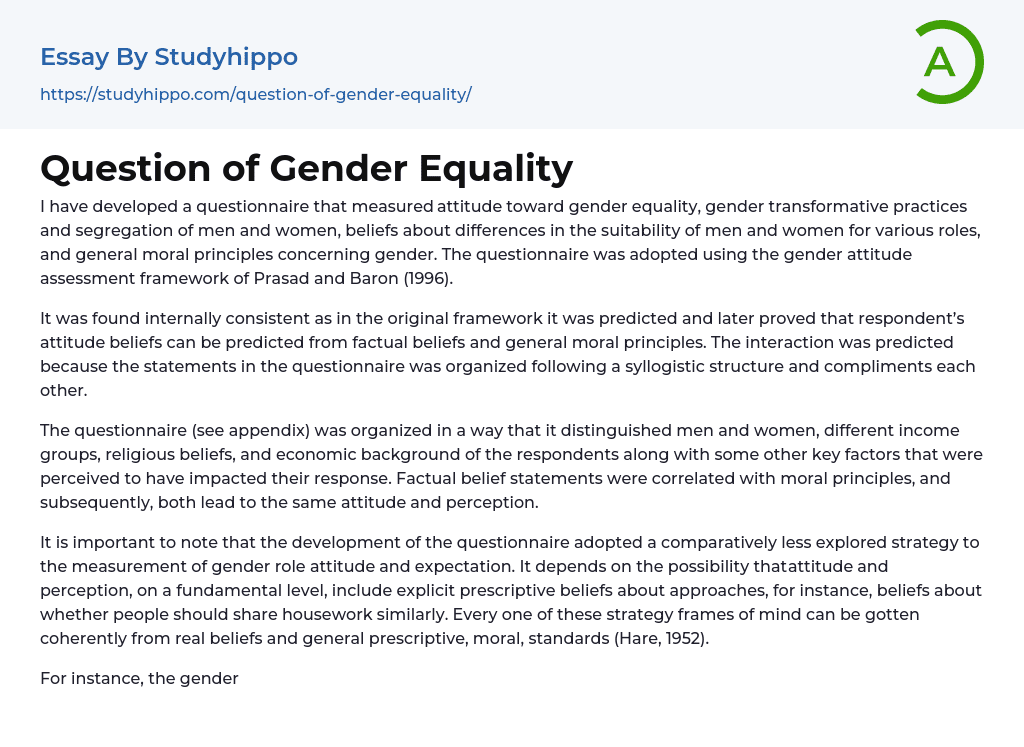I have developed a questionnaire that measured attitude toward gender equality, gender transformative practices and segregation of men and women, beliefs about differences in the suitability of men and women for various roles, and general moral principles concerning gender. The questionnaire was adopted using the gender attitude assessment framework of Prasad and Baron (1996).
It was found internally consistent as in the original framework it was predicted and later proved that respondent’s attitude beliefs can be predicted from factual beliefs and general moral principles. The interaction was predicted because the statements in the questionnaire was organized following a syllogistic structure and compliments each other.
The questionnaire (see appendix) was organized in a way that it distinguished men and women, different income
...groups, religious beliefs, and economic background of the respondents along with some other key factors that were perceived to have impacted their response. Factual belief statements were correlated with moral principles, and subsequently, both lead to the same attitude and perception.
It is important to note that the development of the questionnaire adopted a comparatively less explored strategy to the measurement of gender role attitude and expectation. It depends on the possibility that attitude and perception, on a fundamental level, include explicit prescriptive beliefs about approaches, for instance, beliefs about whether people should share housework similarly. Every one of these strategy frames of mind can be gotten coherently from real beliefs and general prescriptive, moral, standards (Hare, 1952).
For instance, the gende
attitude that boys ought to be supported more in Mathematics than girls may derive from a factual belief that boys are better in science and from a general moral principle that individuals ought to be urged to do what they are probably going to be great at. The survey, therefore, enabled the examination to inspect the inward consistency of attitude attitudes, moral qualities and beliefs (Prasad & Baron, 1996).
The questionnaire is also designed in a way so that it could be useful in a wide variety of cultural and religious difference. It measures attitude attitudes rather than gender-typed personality traits, the beliefs section of which is closer to tests of stereotypes of women (Belk & Snell, 1986). Attitude attitudes, however, must be measured in their own right (Hartman & Hartman, 1983, and Spence & Helmreich, 1972).
They need be inferred from beliefs, personality traits, or stereotypes. Of course, personality traits and attitudes are sometimes found to be related, as found in many studies (e.g. Spence, 1993, and to a lesser degree by Archer, 1989). Statements in the questionnaire are arranged in the form of syllogisms, such as:




